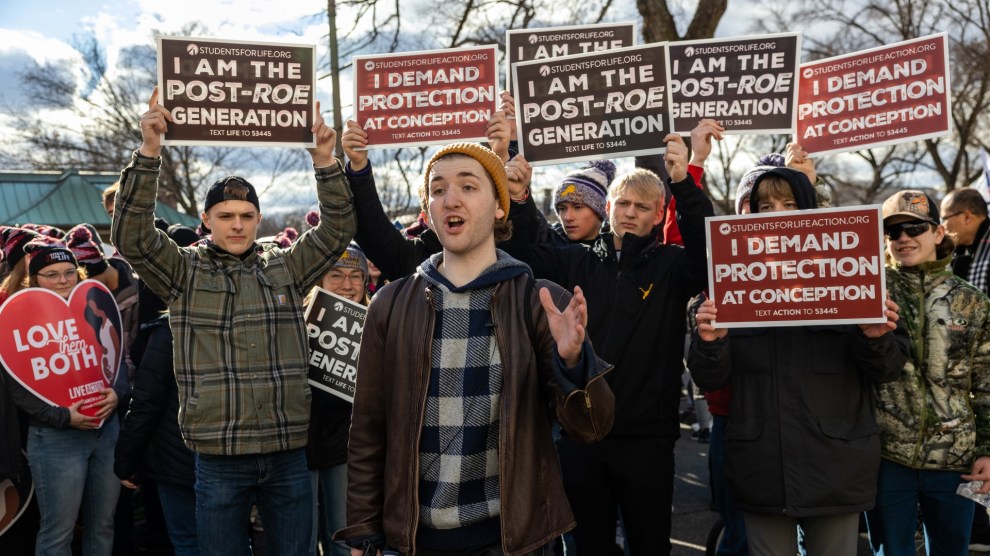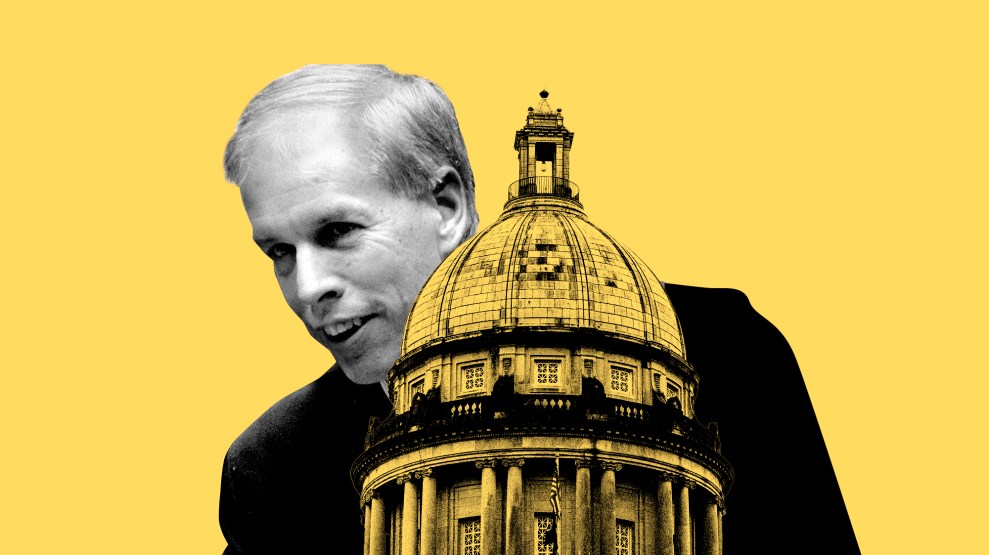
Anti-abortion supporters gather on the National Mall in Washington, DC ahead of the March for Life on January 20th, 2023.Nathan Posner/Anadolu Agency via Getty Images
On Friday, for the 50th year in a row, tens of thousands of anti-abortion proponents gathered in Washington, DC, to demonstrate their commitment to “protecting the lives of the unborn.” Originally created to protest Roe v. Wade, the 1973 US Supreme Court decision that established the constitutional right to an abortion, the March For Life has long included prominent conservatives, local activists, and busloads of school children from Catholic schools, all determined to end legal abortion.
But because the Supreme Court overturned Roe in its 2022 Dobbs v. Jackson Women’s Health Organization decision, relegating the power to legislate abortions to individual states, Friday’s march—occurring just two days before what would have been the 50th anniversary of the landmark ruling—was unlike those that came before it. “While the march began as a response to Roe, we don’t end as a response to Roe being overturned,” Jeanne Mancini, the president of the March for Life Education and Defense Fund, told the crowd. “We will continue to march until abortion is unthinkable.”
With the landmark Supreme Court battle behind them, anti-abortion activists now must decide what to do next, navigating the many competing objectives among the broader movement. Are emergency contraceptives considered abortifacients or not? What about contraceptives generally? Should abortion be permitted in cases of rape, incest, or to protect the health of a mother?
Marie Miller, a protestor from Texas, tells me she won’t be satisfied until there is a national abortion ban with no exceptions for rape or incest. Her sign says “Save the innocent baby! Slaughter the rapist.”
— Abby Vesoulis (@abbyvesoulis) January 20, 2023
Galvanized by the Dobbs decision, many March for Life protestors expressed having a renewed sense of energy and purpose. Members of the Catholic clergy chanted the “Hail Mary” as they marched past the Smithsonian. Two blocks away, a jumbotron screen replayed graphic videos of fetuses being dismembered, featuring text overlays stating, “This is her only baby picture.” Outside the Supreme Court, people knelt down to pray as women nearby on microphones shared tales of abortions they regretted.
“I just want to say thank you so much to the Supreme Court,” said first-time march participant Beth Eddy, a 68-year-old from Columbus, Ohio.
While former president Donald Trump was the only sitting president to ever participate in the annual event, this year’s speaker list skillfully avoided any marquee MAGA associates, and as always, a number of religious leaders participated, including Rev. Franklin Graham, an American evangelist. Also included in the lineup were Republican Congressman Chris Smith of New Jersey, who along with Republican Senator Lindsay Graham of South Carolina, introduced federal legislation that would ban abortion after 15 weeks gestation.
“Clearly a new national debate on abortion has begun as lawmakers at the state level especially act very quickly,” Smith said, mentioning the states where legislators are trying to ban abortion as early as six weeks. “Regrettably, the pro-abortion culture of denial, a modern-day ‘flat earth society’, continues to disrespect baby girls and boys.”
With the judicial battle of toppling Roe behind them, national legislation has become a more important goal for the anti-abortion movement, and this goal was reflected in the route of the march itself. Instead of marching directly to the steps of the Supreme Court, as the group has done for 49 years, the protesters walked around the Capitol Building, where they hope US lawmakers eventually will vote to restrict the freedom to choose country-wide. Congress is “the new front in our battle for life,” March For Life organizers noted on their website.
The House, less than one month into its new session, already passed a bill laying out criminal penalties for physicians who fail to try to revive babies born after an attempted abortion. Federal law already requires doctors to provide life-saving care to babies born alive during or after a failed abortion attempt, but the “Born-Alive Abortion Survivors Protection Act” would clarify what types of medical intervention are required and create penalties for doctors who don’t comply. A fetus surviving an abortion is incredibly rare since 93 percent of abortions are performed at or before 13 weeks gestation and before viability. Republicans now control the House of Representatives, but such anti-abortion legislation will go nowhere in the US Senate, where most legislation requires 60 votes to pass, and where Democrats currently have a 51-49 majority.
With Congress deadlocked, March For Life is devoting much of its ongoing efforts to local battles. Despite Dobbs, abortion is still legal in 38 states—something March For Life wants to change by expanding its organizing efforts. As the protestors marched away from the National Mall, clutching rosaries and singing, large speakers echoed above to remind them of their next goal. “State marches are more important than ever,” a voice blared.
But winning those state battles won’t be easy. Pew Research Center reports that 62 percent of the country supports legal abortion in all or most cases, and abortion rights were a winning issue in all six states in which they were on the ballot in the 2022 midterms.

















